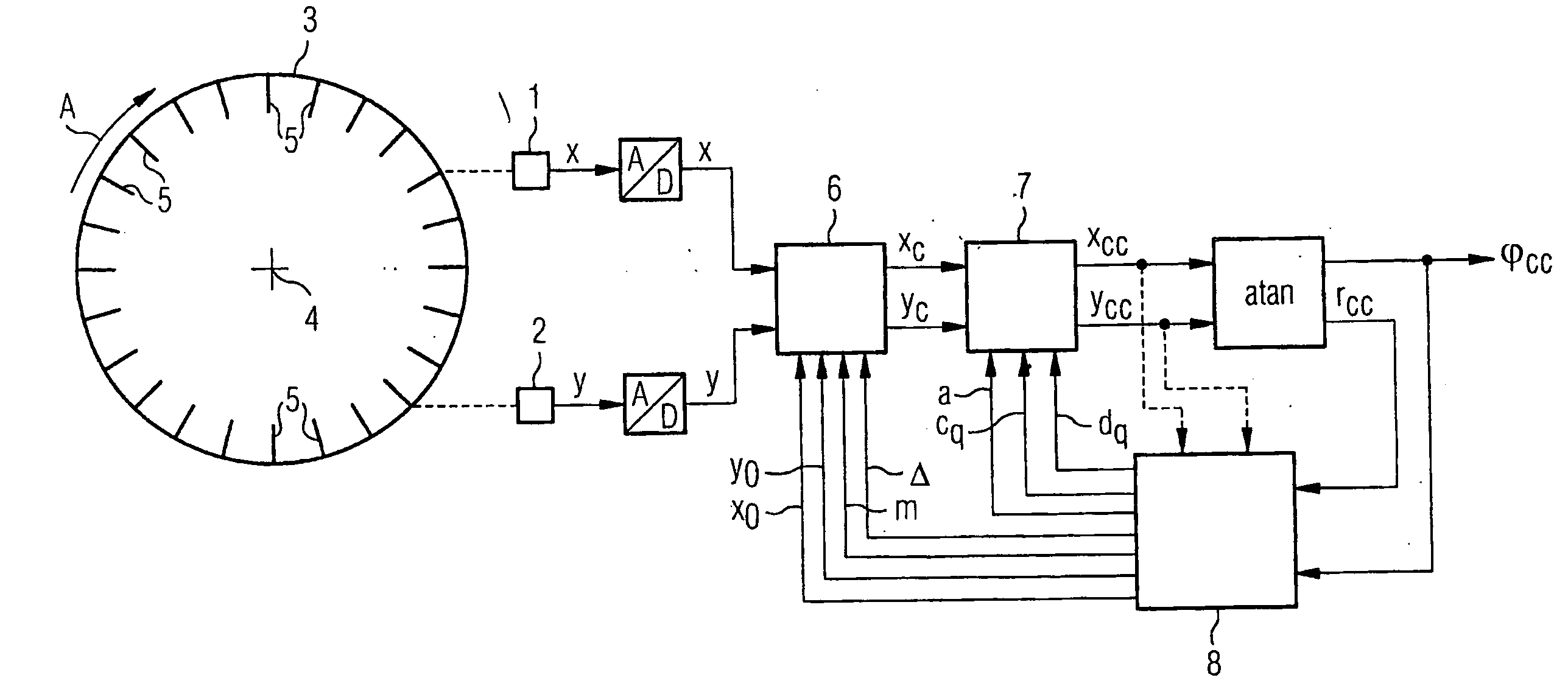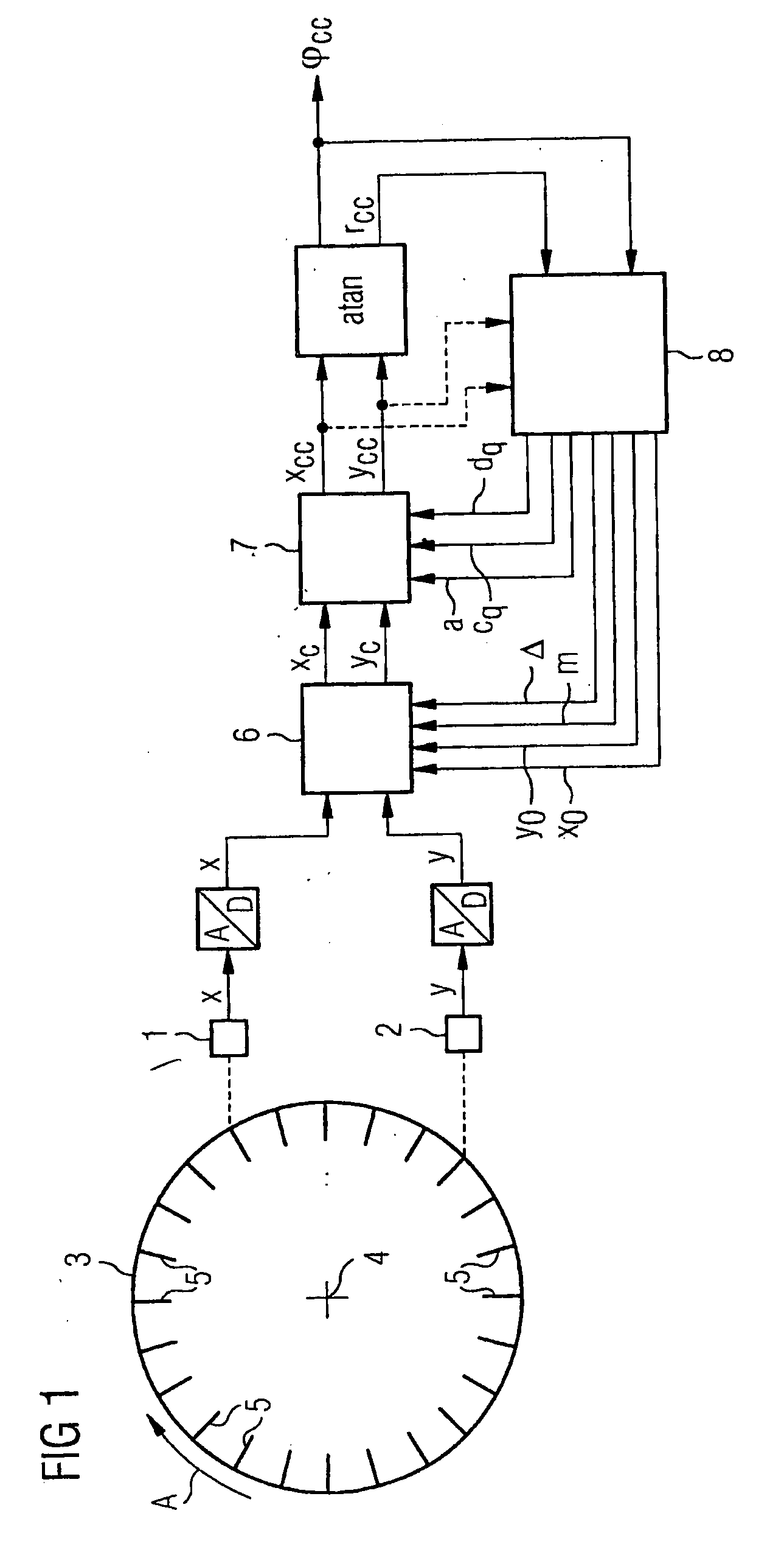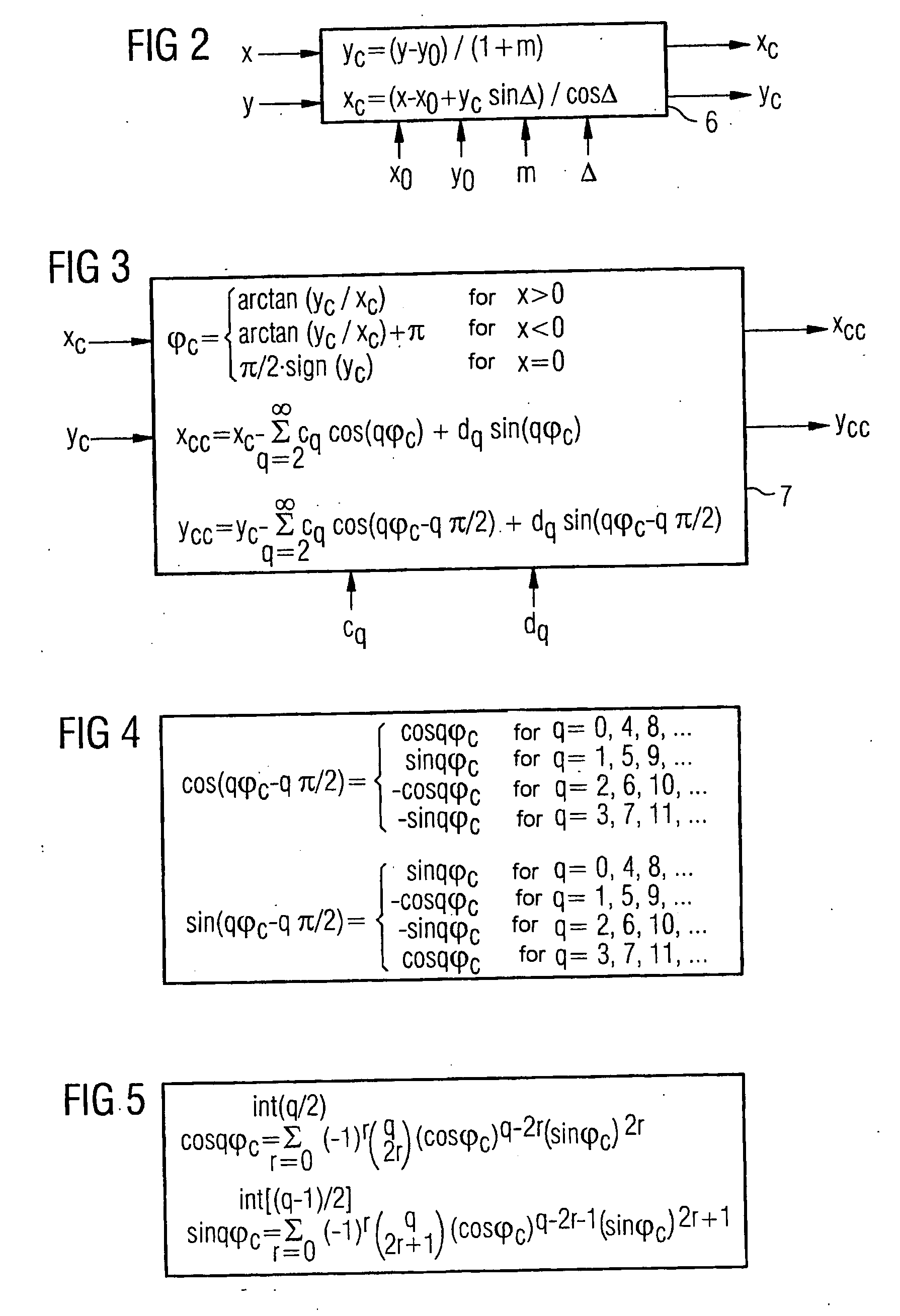Determination Method for a Position Signal
a position signal and determination method technology, applied in the direction of instruments, digital computer details, transmission, etc., can solve the problems of fine correction methods described there only working satisfactorily, subject to errors, and inability to measure signals x, y,
- Summary
- Abstract
- Description
- Claims
- Application Information
AI Technical Summary
Benefits of technology
Problems solved by technology
Method used
Image
Examples
Embodiment Construction
[0058] As shown in FIG. 1, a determination circuit, by means of which a position signal φcc is to be determined, has two sensors 1, 2 and a measuring scale 3. The measuring scale 3 is moveable relative to the sensors 1, 2. As shown in FIG. 1, it can for example be rotated about an axis of rotation 4. This is indicated in FIG. 1 by an arrow A. The measuring scale 3 has numerous (e.g. 1000 to 5000) equally-spaced scale divisions 5. The sensors 1, 2 scan the measuring scale 3 and thereby supply corresponding measuring signals x, y.
[0059] In the ideal case, the sensors 1, 2 have exactly equal sensitivities, and are ideally positioned. For a uniform movement of the measuring scale 3 relative to the sensors 1, 2, the latter are therefore in a position to supply measuring signals x, y which satisfy the following conditions:
[0060] They are periodic.
[0061] They have an equal amplitude.
[0062] They are exactly sinusoidal.
[0063] They have a phase offset relative to each other of exactly 90...
PUM
 Login to View More
Login to View More Abstract
Description
Claims
Application Information
 Login to View More
Login to View More - R&D
- Intellectual Property
- Life Sciences
- Materials
- Tech Scout
- Unparalleled Data Quality
- Higher Quality Content
- 60% Fewer Hallucinations
Browse by: Latest US Patents, China's latest patents, Technical Efficacy Thesaurus, Application Domain, Technology Topic, Popular Technical Reports.
© 2025 PatSnap. All rights reserved.Legal|Privacy policy|Modern Slavery Act Transparency Statement|Sitemap|About US| Contact US: help@patsnap.com



